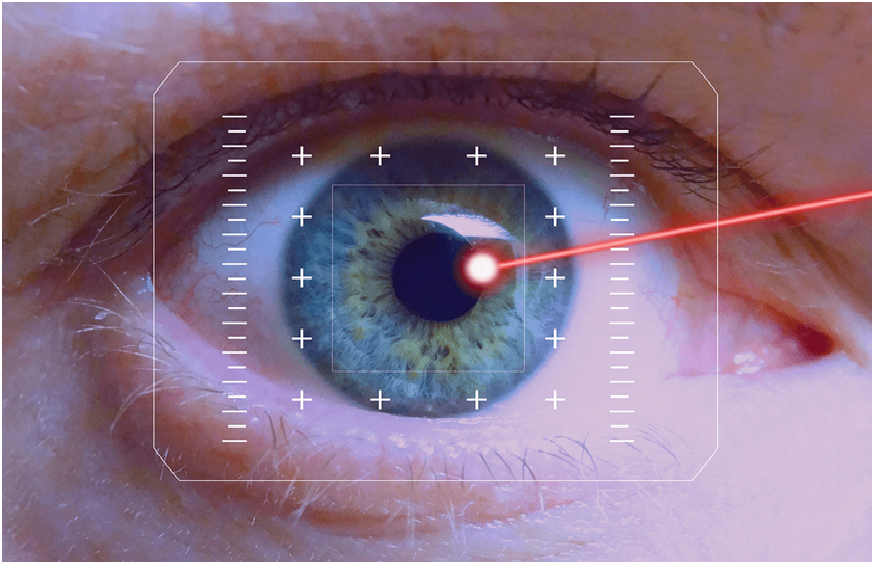Laser vision correction, Laser surgery, Laser-Assisted in Situ Keratomileusis, or commonly known as LASIK, is a procedure to help treat astigmatism, Hyperopia (farsightedness), and Myopia (nearsightedness). Like other kinds of refractive surgery, this procedure reshapes the cornea to make sure that light will enter the eye to focus on the retina for clearer vision properly.
This kind of procedure is usually pain-free and will take more or less fifteen minutes for both eyes. The result will be an improved vision without contact lenses or glasses – begin immediately after the LASIK procedure, and the patient’s vision usually continues to stabilize and improve after a few days.
If you are not a good candidate, there are other vision correction surgeries available today like Laser-Assisted Sub-Epithelial Keratectomy and Photorefractive Keratectomy procedure, as well as Phakic Intraocular Lens surgery.
How is the LASIK performed?
First, the surgeon will create a thin and superficial flap in the cornea with a small tool called a microkeratome or using a femtosecond laser. The surgeon will fold back hinged flaps to gain access to the underlying cornea or the stroma and removes corneal tissues using an excimer laser.
This laser creates an ultraviolet light beam and removes or ablates microscopic amounts of cornea tissue to reshape it so that light can enter the eye and focus more accurately on the retina and improve vision. For people with Myopia, or nearsightedness, the goal of the procedure is to flatten the cornea. For people with Hyperopia or farsightedness, they need a steeper cornea.
LASIK can also correct astigmatism by smoothing irregular corneas into a normal shape. After the ablation reshapes the cornea, the flap is laid back in place and covers the area where corneal tissues were removed. The flaw will seal the underlying cornea after the surgery or while the eye is healing. It only requires topical anesthetic drops, and no stitches or bandages are required.
Before the surgery
The eye doctor will perform a rigorous eye examination to make sure that the eyes are healthy to undergo the procedure. They will evaluate the cornea’s thickness and shape, pupil size, refractive errors like astigmatism, hyperopia, or myopia, and other conditions. The tear film on the surface will also get evaluated, and a precautionary treatment can be recommended to minimize the risk of developing dry eyes after the laser treatment.
Usually, a corneal topographer is used to measure the curvature of the eye’s surface and create a cornea map. With modern technology associated with a custom LASIK procedure, there is a big chance that people will undertake a wavefront analysis that will send light waves through the eyes to provide a precise mapping of aberrations or problems affecting the vision.
The eye doctor will also ask the patient about their general health history, as well as any drugs or medications they are taking to know if they are a fitting candidate for a laser treatment or LASIK. People should stop wearing contact lenses or eyeglasses for a period of time or as advised by the physician (at least two to three weeks) before the eye examination and before the procedure. It is because glasses and contact lenses can temporarily change the natural shape of the cornea.
To know more about this procedure, check out https://www.mayoclinic.org/tests-procedures/lasik-eye-surgery/about/pac-20384774 for more info.
What to expect during laser eye surgery?
Before the surgery begins, numbing drops are applied to the eye to prevent discomfort during the surgery. The physician may also provide the patients with some medication to help them relax. The patient’s eye will be positioned under the laser, and a lid speculum is used to keep the lids open.
The doctor uses ink markers to mark the cornea before making a flap. Suction rings are applied to the front of the eye to help prevent movements or loss of contact that can affect the flap’s quality. After the flap is created, the doctor uses a computer to adjust the laser for the patient’s particular prescription.
People will be asked to look at the target light for a couple of seconds or minutes while the surgeon watches the eye through a microscope as the laser sends light pulses to the cornea. The light painlessly reshapes the cornea, although people may feel a little pressure on their eyes. They will also hear a clicking sound while lasers are operating. It is performed on both eyes separately, with both procedures taking more or less five minutes per eye.
Long-term results
LASIK offers various benefits and can potentially improve the patient’s quality of life. A lot of people achieve an excellent 20/20 vision or better after the procedure, but laser eye surgery results differ. Some patients may only achieve a 20/40 vision or less. Patients may still need to wear contact lenses or glasses following the vision correction.
However, their prescription level will usually be much lower compared to what it was before the procedure. If the patient has mild residual refraction error after the laser surgery and they want a sharper vision for specific activities like driving a vehicle at night, prescription glasses or contact lenses with an anti-reflective coating usually can be a helpful solution.
Not only that, if the patient is sensitive to sunlight after the procedure, eyeglasses with photochromic lenses can help minimize the photophobia for a clearer and more comfortable vision. While the surgery has a good safety profile, complications can still happen. It may include night glares like halos appearing around light sources or from starbursts, as well as infections from the wounds. Some people need enhancements a couple of months after the Lasik surgery to achieve an acceptable visual acuity.
Patients may still need contact lenses or reading glasses after reaching their 40s because of the age-related vision loss or presbyopia. While the procedure has an excellent success rate percentage, patients must discuss with their specialist or surgeon for concerns they may have before they undergo surgery

